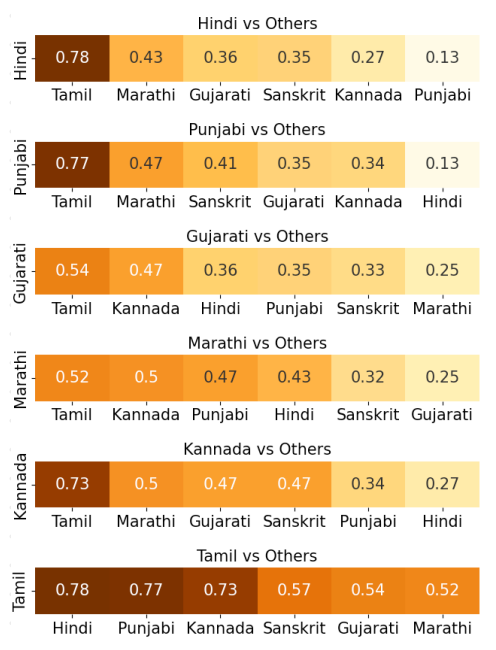When Languages Have Gender Identity Crises
Picture this: You’re learning Spanish, finally getting the hang of it, when suddenly your teacher drops a bombshell: “In Spanish, bridges are masculine, but in German, they’re feminine.”
Wait, what? How can the same object have different genders in different languages? And why do some languages even bother with this gender business while others don’t?
This isn’t just a linguistic quirk, it’s a window into how different cultures see the world. Let me take you on a journey through the fascinating, sometimes frustrating, world of grammatical gender.
The Great Gender Divide
If you’re a native English speaker, you probably think gender is simple: he, she, it. Done. But try learning Hindi, and suddenly you’re juggling masculine and feminine forms for everything:
- English: “He plays” vs “She plays” - same verb, no drama
- Hindi: “लड़का खेल रहा है” vs “लड़की खेल रही है” — suddenly your verb has an identity crisis (रहा vs रही)
For speakers of genderless languages like English, Bengali, or Malayalam, learning Hindi feels like getting a crash course in object identity politics. Meanwhile, Hindi speakers learning English feel like something is missing, where’s the gender info?

India’s Gender Mosaic
Here’s where it gets really interesting. India isn’t just one country linguistically it’s a continent of language families, each with its own gender philosophy:
The Gender Spectrum in Indian Languages
Binary Systems (Masculine & Feminine)
- Hindi, Punjabi
- Think of it as a strict two-party system
Flexible Triads (Masculine, Feminine, Neuter)
- Marathi, Gujarati
- The middle ground—not too rigid, not too loose
Rule-Based Triads
- Tamil, Kannada
- Follows logic (mostly)—if it ends with ‘a’, it’s masculine; ‘i’, feminine
Gender Minimalists
- Malayalam (only gendered pronouns)
- Bengali, Odia (completely gender-neutral)
This diversity creates some hilarious (and frustrating) situations:
- “समय” (time) is masculine in Hindi, but “वेळ” (time) is feminine in Marathi
- A Marathi speaker might call a table “she” while a Hindi speaker insists it’s “he”
- Tamil speakers, who rely on rule-based gender assignment, find Hindi’s subjective approach totally arbitrary
When Languages Disagree
Learning a new gendered language when your first language is also gendered is like playing linguistic Twister—with extra confusion. The problem? Different languages assign gender based on cultural perceptions, not logic.
This is my favorite example of linguistic gender chaos:
- Spanish: “El puente” (masculine) → Spanish speakers describe bridges as “strong and big”
- German: “Die Brücke” (feminine) → Germans describe bridges as “elegant and fragile”
Same object, completely different cultural associations!
And consider the sun’s identity crisis:
- Hindi: “सूरज” (masculine) — the powerful, life-giving sun
- German: “Die Sonne” (feminine) — the gentle, nurturing sun
Your brain gets trained to see certain words as masculine or feminine, then—boom!—new language, new rules. No wonder it feels like your linguistic GPS is malfunctioning.
The Science of Confusion
I got curious about just how much languages disagree on gender, so I decided to measure it. Here’s what I discovered:
I created a Gender Disagreement Score by translating 200 common English nouns into different languages and checking how often their genders differed. Higher scores mean more mismatches—aka, more confusion for language learners.

Key Findings:
- North vs South Indian languages have high gender disagreements
- Marathi and Gujarati are stuck in the middle—disagreeing with both sides
- Dravidian languages (Tamil, Telugu) follow their own logic, making them extra unique
- Foreign languages (except German) mostly have only two genders, leading to high mismatch scores with Hindi
How Language Shapes Thinking
Here’s the mind-blowing part: grammatical gender isn’t just about memorizing words—it subtly shapes how you see the world.
- Hot countries like Italy: The sun is seen as strong and masculine (il sole)
- Colder places like Germany: The sun is gentle and feminine (die Sonne)
- The words we use influence how we think in ways we don’t even notice
Research shows that speakers of gendered languages tend to:
- Associate certain personality traits with objects based on their grammatical gender
- Describe objects differently depending on their language’s gender assignment
- Think about abstract concepts in gendered terms

The Takeaway
So next time you mess up noun genders while speaking a new language, cut yourself some slack. You’re not just translating words, you’re stepping into a whole new way of thinking, a different cultural perspective on reality.
Understanding grammatical gender helps us:
- Appreciate cultural diversity in how we see the world
- Become better language learners by understanding the logic (or lack thereof)
- Recognize our own linguistic biases and how they shape our thinking
Yes, grammatical gender can be frustrating. But it’s also fascinating - a reminder that language isn’t just a tool for communication; it’s a window into how different cultures organize and understand the world around them.
And honestly? That’s kind of awesome.
This blog is adapted from my LinkedIn post and a study I did on gender disagreements in languages. Have you ever struggled with grammatical gender in a new language? Share your experiences in the comments!